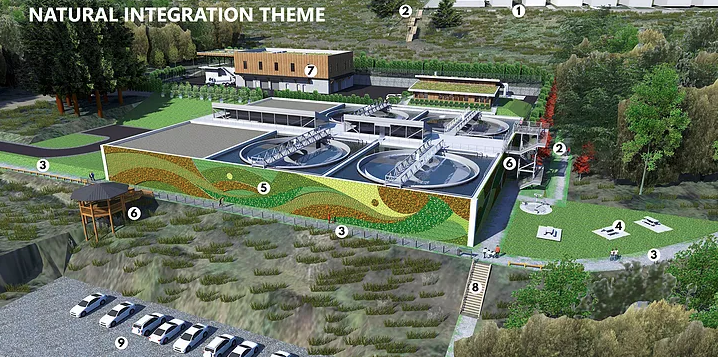POWELL RIVER, B.C. – The next big step in the wastewater treatment plant work has been taken.
Powell River Council has made a decision on the pipeline route between Westview and the new Townsite wastewater treatment facility. At its May 17th meeting, council voted unanimously for the route through Willingdon Beach Trail.
It was determined that there was not much of a difference in capital cost for construction of the route options (Willingdon Beach Trail, and Marine Avenue), but there was a major difference in operating and maintenance costs.
The Willingdon Beach Trail was found to be less expensive in that regard.
Councilor Karen Skadsheim said engineers will use technologies and procedures that will have the least impact on more sensitive parts of the trail.
Council also voted in favour of the natural integration design theme for the new plant. That design will feature a greenwall containing live plants.
The decision was made following public engagement sessions and an online survey, according to a release from the city.
The other design option, called the heritage theme, featured an exterior wall in the outline of a hulk at anchor and heritage-inspired buildings.
“They (residents) wanted something that integrated more with nature in that area,” said Powell River’s Director of Infrastructure, Tor Birtig, in the release.
“With respect to the living wall, we heard that we should not completely enclose it with foliage, but to have various components of it either murals or concrete that has some specific design inlaid in it.”
Council is still planning to apply for grant funding for the project.
In the release, Birtig stated that the province has an agreement in place with the federal government.
The federal government would provide 40 per cent funding, while province would provide 33.3 per cent of funding.
“That’s a 73.3 per cent contribution from the two levels of government. Typically, infrastructure projects are funded with the federal government, provincial government and local government paying one-third each,” he said.
Birtig noted that for this project, there would be less financial strain on local taxpayers, thanks in part to the federal government’s higher contribution.



